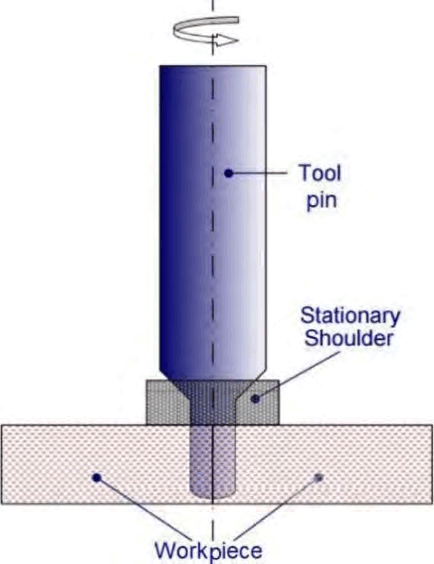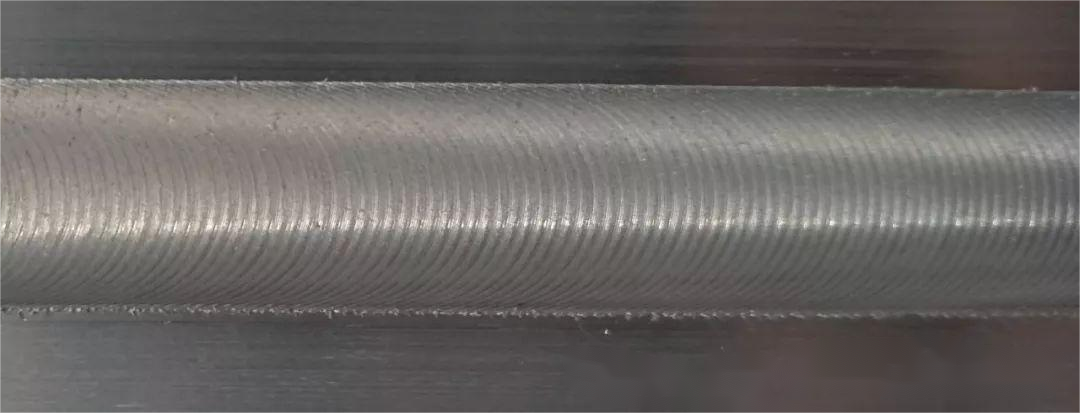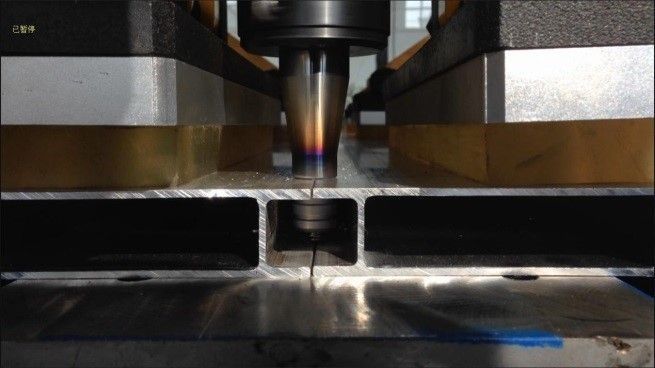Principle of Stationary shoulder friction stir welding
Stationary shoulder friction stir welding (SSFSW) is a new type of friction stir welding method. Unlike ordinary friction stir welding, SSFSW mainly includes a stirring needle for rotation and a stationary shoulder that rubs against the work-piece during the welding process.
The heat input of ordinary friction stir welding mainly comes from the rotational friction between the shaft shoulder and the material, and between the stirring needle and the material.
During the stationary shoulder friction stir welding process, the shaft shoulder does not rotate and only slides relative to the welded part.
The welding heat input mainly comes from the friction between the stirring needle and the material. Compared with ordinary friction stir welding, the heat input is reduced, the width of the heat affected zone is much smaller, and the surface of the weld is smoother.
The stationary shaft shoulder is fixed by a special fixture and does not rotate with the stirring needle. The design of complex stationary shoulder stirring heads and the design of specialized fixtures for fixing the stirring heads have become very important.
It is challenging to design a stirring head with a certain strength that matches the gap between the needle and the shoulder. Compared with traditional FSW, SSFSW has many advantages, as follows:
1. In addition to being suitable for butt welds, stationary shoulder friction stir welding also provides great potential for connecting complex structures such as fillet welds and T-shaped welds. SSFSW welding technology can be used for welding many structures, such as complex structures such as aircraft fuselage panels and wings.
2. Stationary shoulder friction stir welding has less heat input during the welding process, reduces the temperature gradient along the thickness, and the sliding of the shoulder can also obtain a smoother surface.
3. Expanded the application scope, improved production efficiency, fundamentally eliminated the generation of burrs, and the effective thickness has hardly decreased.
4. The flexible and detachable mixing needle and shaft shoulder can weld welded parts of different thicknesses.
SSFSW, which is characterized by several factors, including uniform temperature distribution, non-weld-thinning, and smooth surface, has been successfully used to join Ti alloys, steels, coppers, Al alloys (especially high-strength Al alloys (2xxx and 7xxx) that cannot be welded by conventional fusion welding) and thermoplastic polymers.
Moreover, the other advantages induced by the stationary shoulder are remarkable and have also been used to join dissimilar materials in butt and lap joints, such as Al/Mg alloys and Al/polymers.
Aiming at materials with low thermal conductivity, SSFSW produces a more uniform temperature distribution along the thickness direction and is firstly developed to join Ti alloys.
Al alloys, including the 2xxx, 6xxx and 7xxx series, have been most commonly used and extensively studied from the viewpoints of welding parameters and design of welding tools.

shoulder friction stir welding
It can solve any angle of plate welding problem (such as T-type weld) through using specific shape of stationary shoulder.
At present, AEE has researched the plate welding technology of many kinds of angle, such as 90°, 180°, 202° and so on.
The whole welding process adopts nearly linear heat input, gets very smooth and nearly perfect welds, and the weld section has not any welding defects.
About application of Stationary shoulder friction stir welding, more information can be found on the website: https://a-fsw.com/
#Friction Stir Welding #Stationary shoulder friction stir welding #SSFSW





